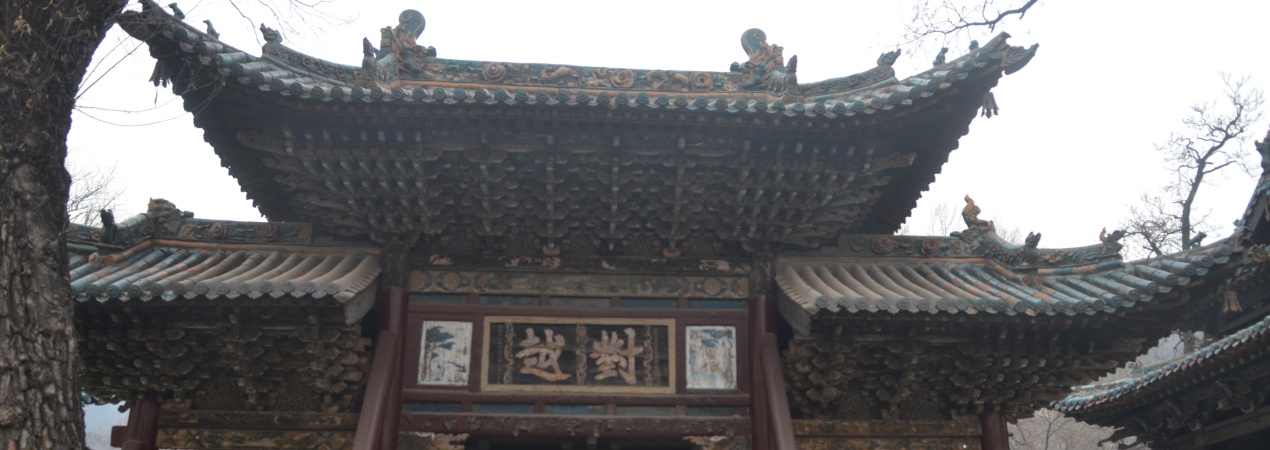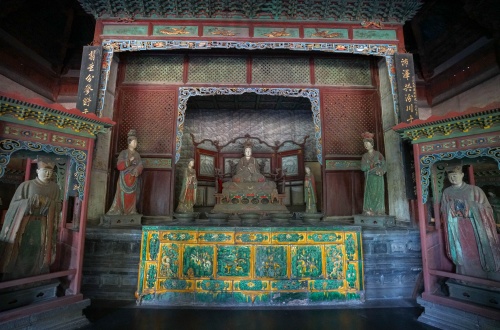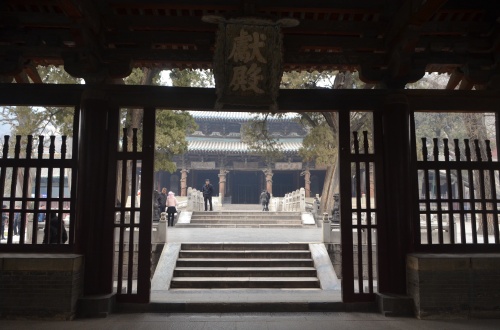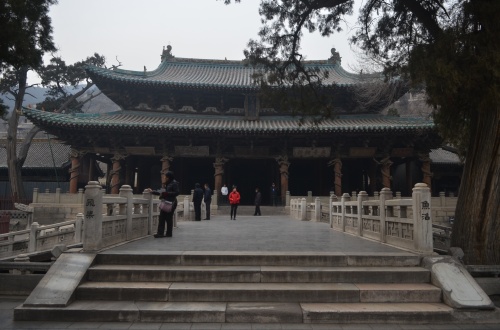Jinci Temple

Jinci Temple sits in Jinyuan District, Taiyuan City, Shanxi Province. People first knew it as Jinwang Temple. Its earliest name was Shrine of Prince Shuyu of Tang. The temple honors Prince Shuyu of Tang. He started the Jin State. It also honors his mother Queen Jiang Yi. This place survives as China’s oldest royal garden. It stands as a treasured part of ancient Chinese culture. Three buildings here hold National Treasure status: the Shengmu Hall, the Xian Hall, and the Flying Bridge over Fish Pond. People call three other things the "Three Wonders of Jinci". These are the Zhou Dynasty Cypress tree, the Ever-Flowing Spring, and the Song Dynasty Painted Maid Sculptures.
- Chinese name: 晋祠 Jìn Cí
- Recommended Duration: 2.5-3.5 hours
- Entrance Fee: RMB 80
- Opening Hours: 8:30- 18:00
- Best Time to Visit: Mid-April to June or September-October
- Address: Jinci Town, Jinyuan District, Taiyuan, Shanxi Province
- How to Get There:
- From downtown Taiyuan: Take bus 308, 804, or 856
- From Taiyuan Railway Station: Tourist bus line 8
Highlights of Jinci Temple
Shengmu Hall (圣母殿)
 Shengmu Hall
Shengmu HallThe Shengmu Hall’s architectural crown jewel showcases engineering genius from 1032 AD. Marvel at the front hall of the Shengmu features a huge upturned eaves supported by eight carved wooden dragons, which enables the front hall to be column-free. Inside, there are 42 life-sized clay figurines of palace maids from the Song Dynasty. Each shows a unique expression and posture. Check out the little details and look at the shy maid's half-hidden smile. These sculptures are typical of Chinese figure sculpture.
The Xiandian Hall (献殿)
 Xiandian Hall
Xiandian HallJinci Temple’s Xiandian Hall is a treasure from the Jin Dynasty (1168 AD) and was used for offering sacrifices to deities. It’s an open pavilion without walls. It’s supported by connected wooden dougong brackets. No nails are used. Its “open pavilion” idea is unique in Chinese ceremony architecture. The hall has a modular design for natural ventilation to preserve offerings, and its carved latticed windows filter light onto the stone altar. As a key national cultural relic, it shows the architectural transition from the Song to Yuan Dynasties. Now, visitors walking through its colonnades can imagine the past royal rituals with lingering incense.
Flying Bridge over Fish Pond (鱼沼飞梁)
 Flying Bridge over Fish Pond
Flying Bridge over Fish PondThis bridge is China's earliest water-land interchange bridge and the sole surviving cross - shaped one among ancient bridges. Its square pond contains 34 stone piers. The piers feature wooden dougong brackets and beams that support the stone decks and railings. The bridge is cross - shaped, resembling a bird about to fly, and it's strong, beautiful and durable, with great historical and artistic value.
Three Wonders of Jinci Temple
The Three Wonders of Jinci are the Zhou Dynasty cypress, the Nanlao Spring, and the Song Dynasty painted clay figurines of maidens. Though said to be planted in the Western Zhou period over 3,000 years ago, the cypress tree, or "dragon cypress," stands at a 45° tilt south of the Shengmu Hall, still lush and strong. The Nanlao Spring, the main source of Jin water from a fault rock, stays at 17°C year-round, clear and ever-flowing, hence "Jinyang's Number One Spring".Inside the Shengmu Hall are 42 Song-era clay figurines of maidens, which, along with the main Shengmu figure, mirror Song court life. These lifelike figurines, each with its own age, build, attire, expression, and motion, yet with accurate human proportions, showcase Song sculptors' superb skills and deep grasp of human psychology.
Educational Value
The surrounding colonnaded gallery (副阶周匝, fujiē zhōuzā) of the Shengmu Hall is a covered walkway that goes around the main hall. It is supported by 26 columns around the edges. This 2.5-meter-deep corridor makes the building look more grand and also provides a covered space to protect from rain and wind.
The dougong bracket system in the core structure transfers the roof weight to the columns gradually. It uses interlocking wooden parts like dou (blocks), gong (arms), qiao (lever-arms), and ang (cantilevered beams). They are stacked in layers and have eaves that stick out in levels. The bracket sets on the front eaves columns use a "double-tiered qiao with five outward projections" (双杪五铺作, shuāng miǎo wǔ pùzuò). Each set has 17 wooden pieces that fit together just right. The joints are connected with mortise and tenon, which can absorb stress. This makes the building have the earthquake - resistant feature of "walls collapsing while the frame remains intact" (墙倒屋不塌, qiáng dǎo wū bù tā). It shows the high level of Song - era architectural engineering as written in the Yingzao Fashi (营造法式, State Building Standards).
Activities to do at Jinci Temple
Cultural Exhibition: The Jinci Museum holds art exhibitions annually to showcase Jinci culture. These include special cultural activities. During Qingming Festival, there's plant dyeing for kids. Ceramics inspired by Jinci are made too. Visitors can learn about the history of Jinci rubbings. They also get to experience the charm of ancient Jinci culture directly. Check the Jinci Museum's official website for exhibition details.
Drop us a line and we'll connect you with the top China expert in no time!